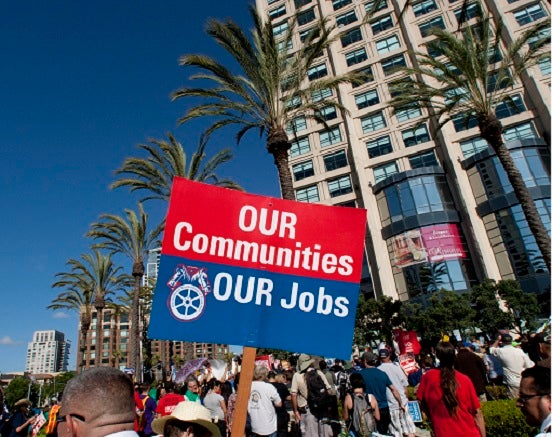Uncategorized
Unions Can Help Close the Salary Curve

Over the past seven decades, the U.S. has experienced a sizable decrease in union membership. Meanwhile, during that time, the percent of income going to those in the top 10 percent has skyrocketed.
Coincidence? Economists and worker advocates think not. Union membership stood at 11.1 percent in 2015, while the nation’s top tenth earned 47.2 percent in the most recent figures available. For comparison, 33.4 percent of workers belonged to a union in 1945. At that time, the top 10 percent took in only 32.6 percent of all income.
As the Economic Policy Institute wrote, “The single largest factor suppressing wage growth for working people and suppressing union membership over the last few decades has been the erosion of collective bargaining. This erosion has affected both union and nonunion workers alike, contributing to wage stagnation and growth in inequality.”
The benefits of being in a union go beyond pay, however. As Frank Manzo, director of the Illinois Economic Policy Institute and Dr. Robert Bruno, director of the Labor Education Service at the University of Illinois at Champaign-Urbana, detailed in an April report, for every dollar an Illinois worker pays in union dues, he or she gets $6.12 back in better wages and benefits.
There are some signs of good news, however, on the union front. Union membership nationwide rose by 219,000 in 2015 compared to the previous year, a Bureau of Labor Statistics survey reported. BLS calculated that unions had 14.795 million members last year. Membership increases occurred even as unions battle right-wing politicians and their big business backers over the right to organize, union dues and other issues.
Those union jobs also brought better pay. The median weekly wage for union members, the point where half are above and half below, was $204 higher than for non-union workers. That difference in pay is how workers can smooth out the salary curve that exists in the U.S. today.